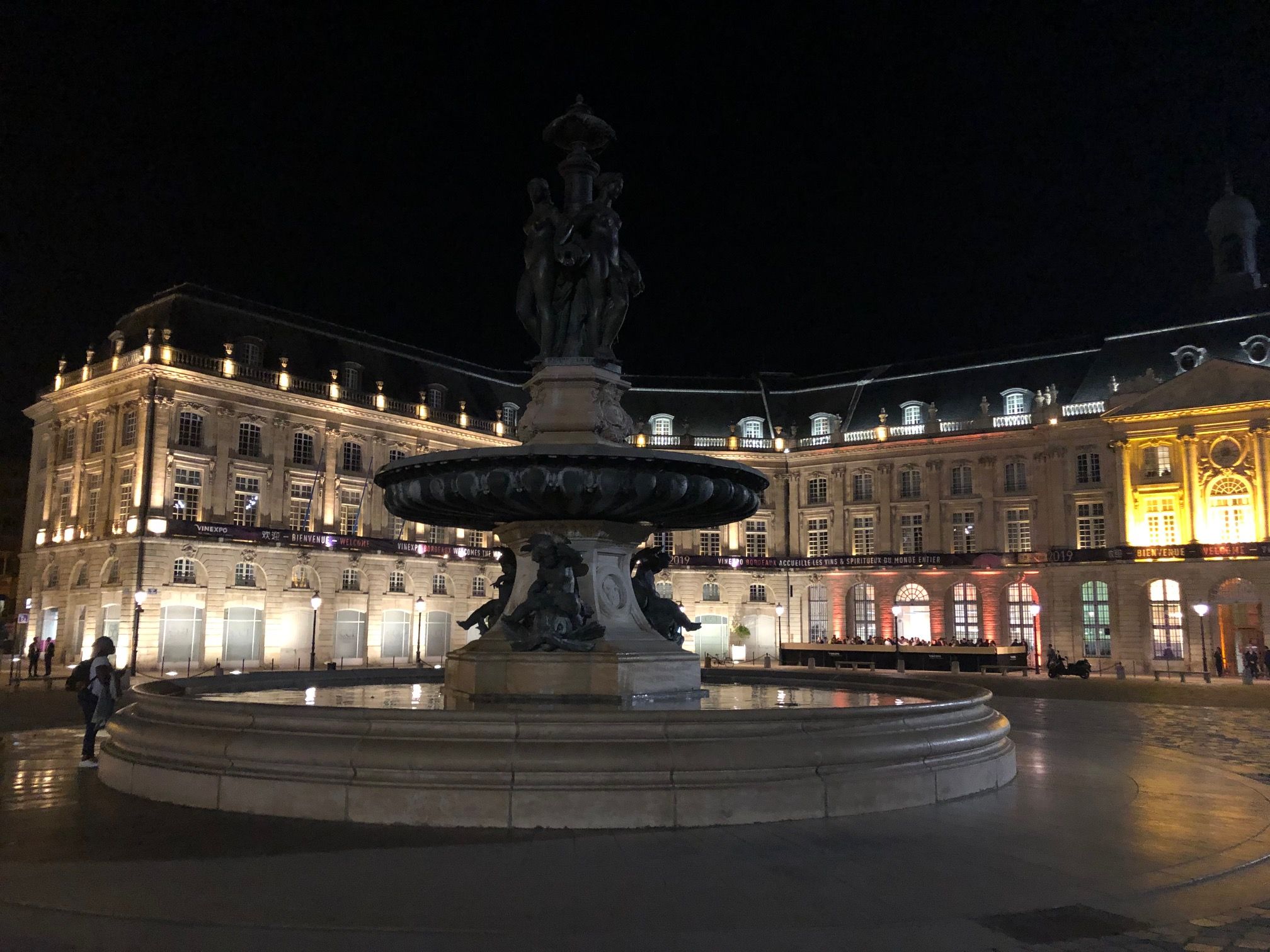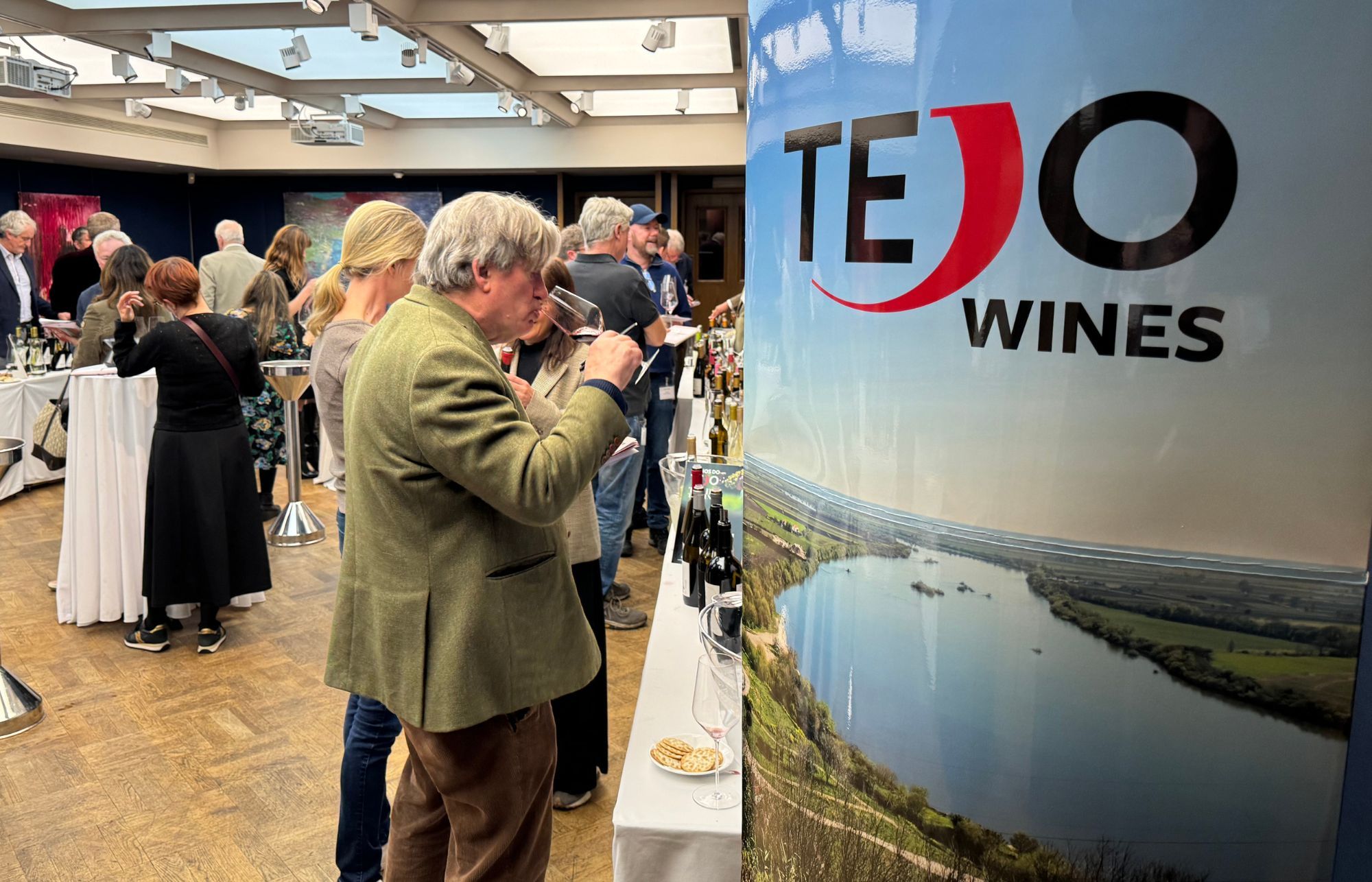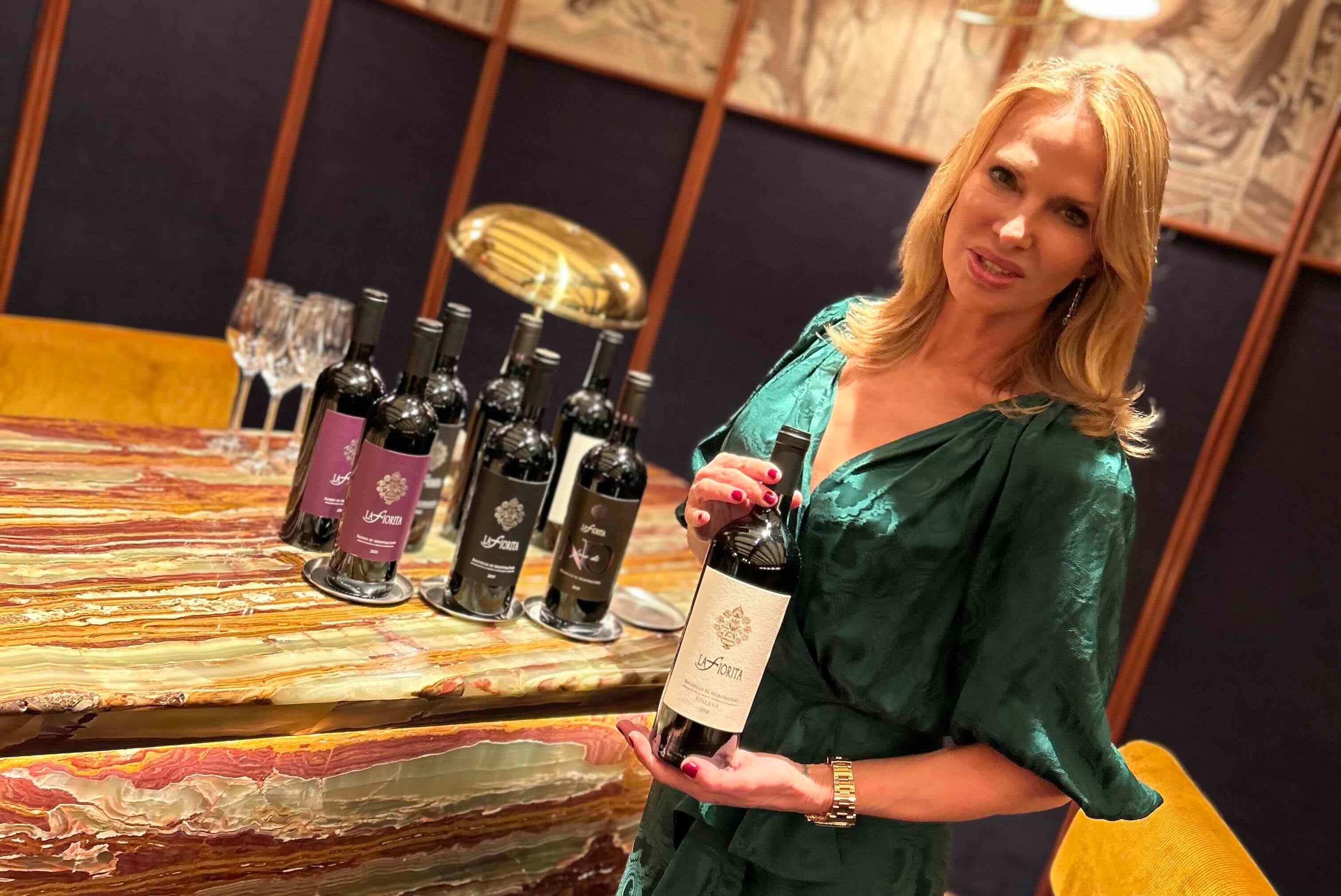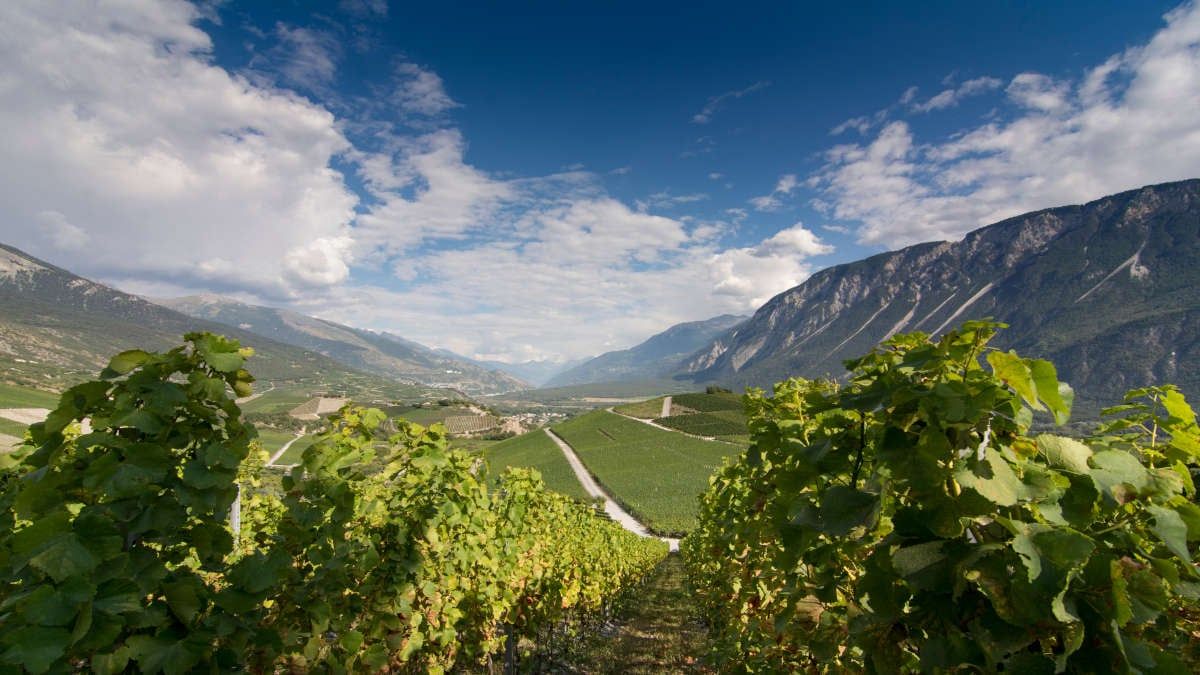Just what is it about Wines of Portugal and churches?
ViniPortugal’s last big annual tasting, in March 2022 at the tail end of the pandemic, was an absolutely packed event held at St Mary’s Church in Marylebone. Despite Covid, some of Portugal’s top wineries were on hand including Anselmo Mendes, Soalheiro and António Maçanita, all demonstrating how this fascinating wine producing country - famous for having nearly 300 indigenous grape varieties - has successfully married tradition with innovation to become world class.
This year’s tasting was held at Westminster Chapel, near St James’s Park and was thankfully a more intimate affair but still one with some 58 producer tables, with many looking for UK representation. And it’s a good time to do so, with Frederico Falcão, President of the ViniPortugal board confirming that, despite holding its annual tastings in churches, there isn’t much the country’s wine industry needs to pray for.

ViniPortugal's president Frederico Falcão
“Despite the general fall in wine consumption we’ve managed to increase our sales in both volume but especially value terms, and the UK - with and without port - is now our third biggest market,” he says.
“If I’m honest, promoting Portuguese wine is a bit of a nightmare because it’s so hard to define, but this complexity is actually one of our strengths. We’ve been working closely with indies and they say that we are one of the most interesting countries to buy from, followed by Italy. Why? Because unlike countries that offer one or two grapes or styles, we’re all about diversity - that of our grapes, our terroirs, our styles. People never get tired of our wines because they’re always finding new things.”
A lot of this diversity was evident at this year’s tasting. In the many years I’ve been writing about Portugal, its wine industry seems to have always been evolving, with winemakers experimenting with new styles and rediscovering old indigenous varieties, long before a once deeply conservative Spain started doing something similar.
Douro has moved from being a port region to one also making the highest quality still wine; the Minho has moved away from making simple blended Vinho Verde to making more complex, often single varietal wines, whilst Dao and Bairrada continue to explore their varietal heritage, with the former establishing Encruzado as a Burgundian-style wine of real classic, the latter working with the tricky Baga variety in both still and sparkling wines.
The sunny Algarve is a work in progress, making wines from varieties unique to that region and its four DOCs. And the Azores and Madeira have become classy still wine regions in their own right, led by the likes of the impressive António Maçanita.

ViniPortugal annual tasting, London, March 20
So what’s the latest, big new thing?
“Douro and Vinho Verde continue to get better and better but the region that’s probably seen the biggest change is Lisboa where there’s been a huge increase in quality and perception,” says Falcáo of the region once known for its rather underwhelming table wine, but today home to nine DOCs, the largest in Portugal, and among them some of the country’s most exciting.
Another big change is Portugal’s shift towards making quality white wine, which outside the Minho/Vinho Verde used to be not much of a thing, and low intervention/lower alcohol wines.
As if to prove the point, Dirceu Vianna Junior MW held a masterclass - Hidden Gems - focused on some of Portugal’s less sung varieties including Tinta Miúda, Rabigato, Sercialinho (a Bairrada crossing of Sercial and Alvarinho) and Jampal (no, me neither), the majority of which were white and made in a mineral, quite high acid style not normally associated with Portugal.
That mysterious Jampal grape - recently rescued from extinction and now mainly grown in tiny quantities in the Lisbon region - was put to great use in the Dona Fátima Reserva 2020 produced by ManzWine producing a fine, lightly perfumed wine with suggestions of linden and pineapple.
The Rabigato, an ancient, high altitude Douro grape was great in the Ensaios Extremes by Colinas do Douro 2020 – bracing acidity but an unexpectedly long finish and just 11.5% alcohol.
However, my favourite of Junior’s Gems were made from slightly more established grapes, the Burgundian Fonte do Ouro Dão Nobre 2019, a rich but beautifully balanced Encruzado and one of the most delicious rosés I’ve tasted out of Portugal, Sogevinus’s Winemakers Collection 2022, made with 100% Tinto Cão - an ancient Douro grape - and wonderfully rich and complex, with suggestions of strawberry and peach. However, when I say established there’s just respectively 639 hectares and 559 hectares of these varieties planted - less than 10% of the more commonly seen Alicante Bouschet of which there is some 6458 hectares planted, mainly in the Alentejo.
One statistic that really hits home just how diverse the Portuguese wine industry is, is that no single grape variety accounts for more than 10% of plantings; the most prolific white grape is Fernão Pires accounting for 6% of white wine production and top red is Aragonez with 10%.
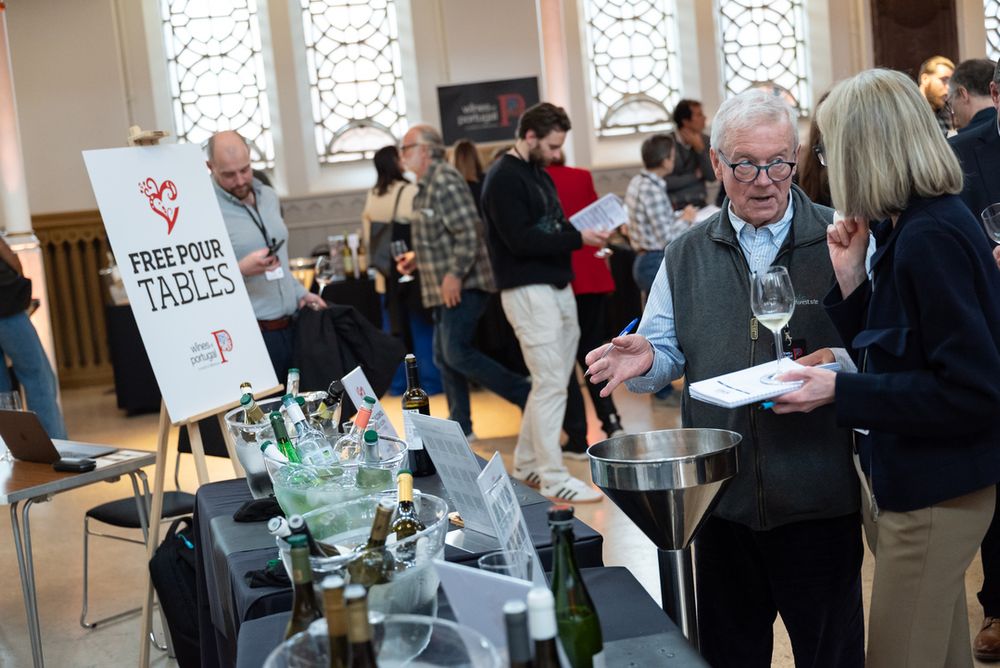
So which producers here rocked my boat?
After years of its chairman Adrian Bridge saying The Fladgate Partnership/Taylor’s would confine itself to port, the Douro-based group has gotten into still wine with a vengeance buying the wine assets of Ideal Drinks last year (bringing wines from the Minho, Dao and Bairrada) whilst a few weeks ago it announced it would add Douro wines to its portfolio, via the acquisition of Quinta do Portal. The former were on show at Fladgate’s stand, with the flagship Principal 2012 (Touriga Nacional, Cab Sauv and Merlot) from Bairrada showing well; I really liked the full-on Dom Bella 2015 – 100% Cabernet Franc, rich, berry-charged fruit supported by a soft vanilla backbone – and the Bella Elegance a 100% Touriga Nacional - both from Dão.
The latter, meanwhile, were being shown by Awin Barratt Siegal (ABS), the current importer of Quinta do Portal. There’s a great range here including some moreish Moscatel but the Portal Colheita Branco 2023 (cask sample) is a great demonstration of the value here (around £20 a bottle) – a fresh, floral and distinctive blend of Viosinho, Gouveio and Malvasia, perfect as an aperitif or with food.
On this showing, Fladgate has made a canny purchase, and I look forward to seeing what they do with the wines.
The wonders of Baga – in both still and sparkling styles – and of Encruzado were being shown by Quatro Cravos and Julia Kemper Wines, producers from Bairrada and Dão respectively, and both remarkably seeking representation in the UK. Amongst the former I loved the Original Bairrada 2018 a sparkling Baga with 36 months on the lees, rich and creamy with a soft mousse and great value at just £8 duty paid, and the cheery, Charmat method Positivo (the name says it all), a charming blend of Bical and Maria Gomes.
For a still – so red – Baga look no further than the moody, complex, Nebbiolo-like Pé de Ganso Reserva 2020 – also great value. From Julia Kemper, another great range, fully organic, including the cheery JK Branco 2022, a fresh blend of Encruzado and Malvasia Fina (very mineral, reflecting the granite soils) and the complex JK Reserva 2017, a blend of native grapes (Touriga Nacional, Jaen, Alfrocheiro and Tinta Roriz). Very full on and delicious.
Much of the Niepoort range was on show via its new importer, Halo Wines and were as quirky and low alcohol as ever: favourites for me included the Lagar de Baixo Baga 2020, very expressive, fruit-driven but wonderfully textured and the delicious old vine Dão Conciso Branco, just 11.5% - mainly Bical and Encruzado – but with exceptional length.
Quinta do Tamariz (seeking distribution) has a wonderful range of Vinho Verde wines, as you might expect from an established, historic producer about to celebrate its centenary. I loved the textured QdT Reserva, 100% Alvarinho, full-on with 13.5% alcohol but nicely textured with suggestions of pear and linden on the palate. But the most distinctive wines here are the Pet Nat, a white made from Loureiro, 14% and a pink from Touriga Nacional.
“These are difficult wines to make, especially the Touriga, because you have to know exactly when to bottle. But these are part of our heritage and are made from 100% estate grapes,” says Sofia Lobo of Quinta do Tamariz.

Dirceu Vianna Junior MW held a masterclass - Hidden Gems - that focused on some of Portugal’s less sung varieties
If Encruzado rocks your boat, look no further than Dao-based Global Wines (also seeking distribution) which has a great range, including a traditional method sparkling Cabriz Sparkling Brut 2017 (nice balance, with 4 g/l of sugar and an equal blend of Encruzado, Bical and Malvasia Fina) and the prize winning Casa de Santar Vinha dos Amores 2020, a very Burgundian 100% Encruzado, full on, with balanced oak giving a vanilla backbone to the fruit. Quality stuff.
To the Alentejo for my last two producers – Herdade de Malhadinha Nova (Raymond Reynolds) and Herdade Paço do Conde (seeking distribution). I remember visiting both of these producers many years ago and in the case of the former, being struck by the charming wine labels, drawn by the Soares’ family children. Well, time moves on and here was one of them in front of me, now in her mid-20s, clutching a bottle with her childhood drawing still adorning the label.
All these wines are decent – and organic - but special mention should go to the outstanding Malhadinha 2022, an oaked white blend of Arinto, Chardonnay, Viognier and Alvarinho, and the rich Teixinha field blend 2021, which includes Roupeiro, Bical, Cercial and Tamarez.
I was a bit surprised to see that Paço do Conde doesn’t currently have an importer – it’s one of the Alentejo’s best known producers and has been in the Castelo Branco family for over 300 years, with its recognisable label featuring medieval minstrels. Again, good solid wines with special mention going to the rounded Herdade Paço do Conde Reserva Antão Vaz 2022, full on style with suggestions of apricot and peach on the palate, and the Herdade Paço do Conde Grande Reserva 2018, a typically hefty 15% abv Alentejo blend of Alicante Bouschet, Syrah, and Touriga Nacional, showing dark berry and cherry fruit and hints of liquorice and chocolate on what is a very long, evocative palate.
So another great ViniPortugal tasting, in another impressive church venue. I departed feeling, if not blessed, more than impressed - by the quality, value for money and extraordinary diversity. Hallelujah indeed.


